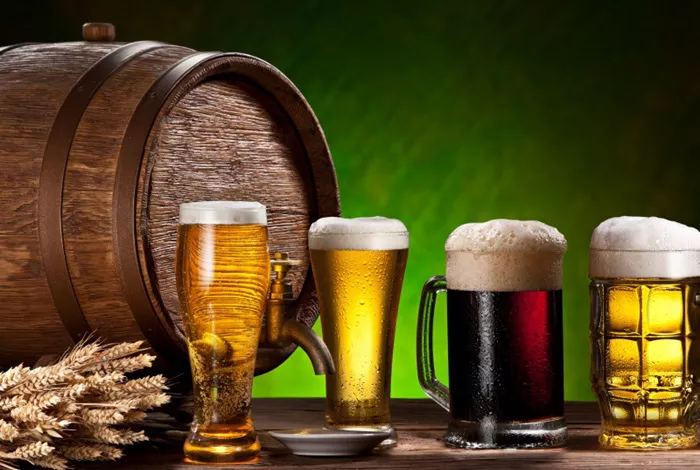Ginger beer is a popular beverage with a spicy, slightly sweet taste that many people enjoy worldwide. But there’s often confusion about whether it should be classified as a “soft drink.” While it shares similarities with sodas, such as being carbonated and non-alcoholic, ginger beer has distinct characteristics that set it apart. In this guide, we will delve into the origins, ingredients, and production processes of ginger beer, explore its similarities and differences with traditional soft drinks, and address the question: Is ginger beer really a soft drink?
1. The Origins of Ginger Beer
Ginger beer has a rich history that dates back centuries. Originally brewed as a fermented beverage, it was traditionally made with ginger root, sugar, water, and a fermentation process that produced natural carbonation. This section will delve into the history and evolution of ginger beer, from its early use as a medicinal tonic to its rise in popularity as a refreshing, non-alcoholic beverage.
Subsections:
The Early Days of Ginger Beer: Its origins in Europe and the Caribbean.
Medicinal Uses: How ginger beer was first consumed for its health benefits.
The Evolution into a Popular Beverage: From homemade brews to mass production.
2. What Makes Ginger Beer Different from Ginger Ale?
While ginger beer and ginger ale both feature ginger as a key ingredient, they differ in terms of flavor, production, and carbonation. This section will explore these differences, clarifying the unique qualities that make ginger beer stand out from other ginger-based sodas.
Subsections:
Ginger Beer vs. Ginger Ale: Key Differences in Taste and Ingredients.
The Role of Fermentation: How ginger beer gets its distinctive flavor.
Commercial vs. Homemade Versions: How these differ in production and taste.
3. Is Ginger Beer a Soft Drink?
This section will delve into the ultimate question: is ginger beer truly a soft drink? It will discuss the official definition of soft drinks, whether ginger beer fits those criteria, and how the classification can vary by region and production method.
Subsections:
Defining Soft Drinks: What qualifies as a soft drink?
The Carbonation Factor: How carbonated beverages are classified.
The Role of Alcohol: Is ginger beer alcoholic or non-alcoholic?
4. The Ingredients of Ginger Beer
Ginger beer is made from a handful of simple ingredients, but the proportions and production methods can greatly impact the final product. This section will break down the common ingredients in ginger beer, including ginger root, sugar, and fermentation agents.
Subsections:
The Role of Ginger: Flavor and health benefits.
Sweeteners: Sugar vs. Artificial Sweeteners in Ginger Beer.
The Use of Fermentation: How it contributes to both flavor and carbonation.
5. The Production Process of Ginger Beer
This section will focus on how ginger beer is produced, comparing both traditional fermentation methods and modern, mass-produced techniques. It will explore the various stages of brewing, from mixing ingredients to fermenting the liquid and bottling the finished product.
Subsections:
Homebrewing Ginger Beer: A Step-by-Step Guide.
Commercial Production: How large-scale manufacturers make ginger beer.
The Science of Fermentation: How yeast and sugar interact to create carbonation.
6. Health Benefits of Ginger Beer
Ginger beer has long been valued for its potential health benefits, particularly due to the properties of ginger. This section will explore the health claims associated with ginger beer, including its effects on digestion, nausea, and inflammation.
Subsections:
Digestive Aid: How ginger helps with stomach discomfort.
Anti-inflammatory Properties: The potential health benefits of ginger.
Does Ginger Beer Have the Same Health Benefits as Ginger Tea?
See Also: How Often Should You Drink Beer?
7. The Popularity of Ginger Beer Today
Ginger beer has seen a resurgence in popularity, especially in the craft beverage and health-conscious markets. This section will examine the current trends in ginger beer consumption and how it fits into today’s beverage landscape.
Subsections:
The Rise of Craft Ginger Beer.
Ginger Beer as a Mixer: Its use in cocktails like the Moscow Mule.
Health-Conscious Consumers and Ginger Beer.
Conclusion
In conclusion, ginger beer can be classified as a soft drink, but it has characteristics that make it distinct from other sodas. Its roots in fermentation, unique taste, and health benefits make it a category of its own. While it might not always fit neatly into the definition of a traditional soft drink, its carbonation and non-alcoholic nature place it firmly in the broader beverage category.
You Might Be Interested In:


